IN-DEPTH / IN-DEPTH
Protecting precious black soil: What can we learn from Lishu Model?
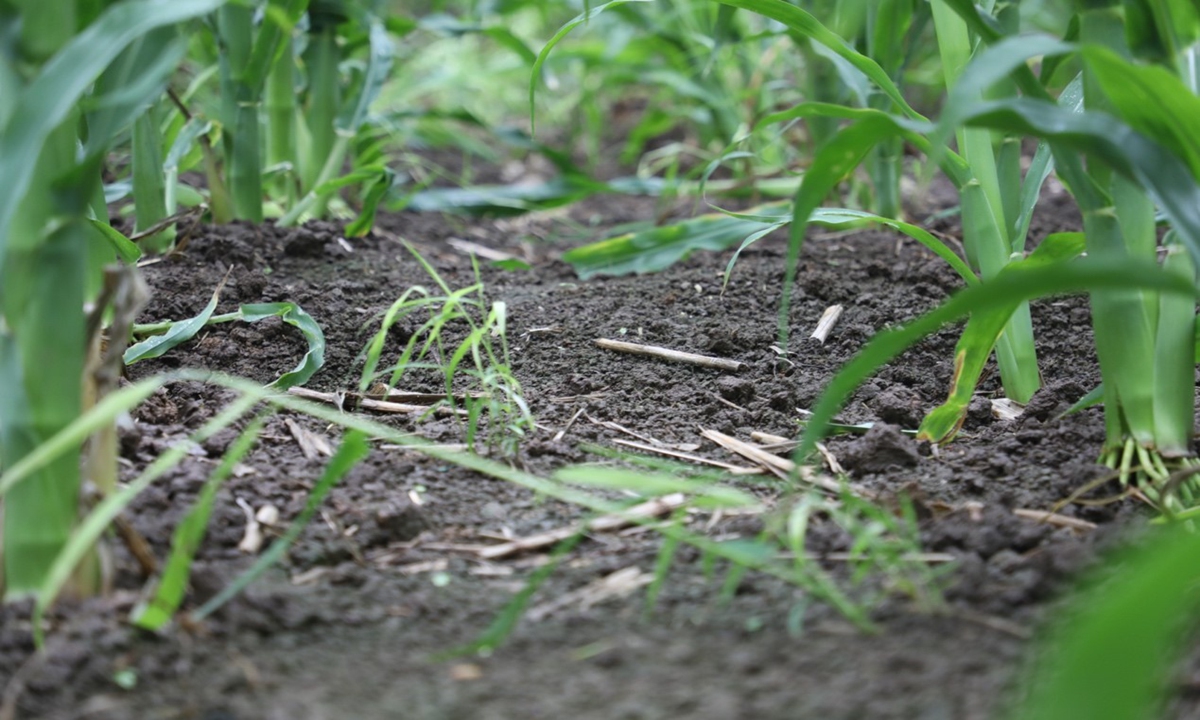
Black soil for planting corn Photo: Liu Zihe
"When I introduced the situation of our local mechanized and large-scale farming operations, what surprised me was that the president had a very good understanding of the global black soil situation, while asking follow-up questions about ways in which we protect the arable land," said Wang Guiman, director of Agricultural Technology Promotion Station in Lishu county, Northeast China's Jilin Province.
On July 22, 2020, Xi Jinping, general secretary of the Communist Party of China Central Committee, Chinese president and chairman of the Central Military Commission, inspected Lishu, learning about the protection and use of black soil at a demonstration zone for green food production.
Wang won't forget the day on which Xi entered a cornfield, stressing effective measures to protect and utilize the high-yielding black soil, which is "as treasured as giant pandas."
Black soil, one of the most fertile soil types in the world, is characterized by its high humus content. Northeast China has the reputation of being a "Golden Corn Belt" and the "Land of Soybeans." However, compared with the other two major black soil areas in the world - the Ukrainian Plain in Europe and the Mississippi Plain in the US, only the Northeast Plain needs to be cultivated and protected at the same time.
"In China, black soil cultivation is highly productive, but we also face the problem of land fertility overdraft," Wang said.
How can black soil be better protected? Three years after Xi's inspection, the Global Times reporter followed the president's steps to take a closer look at why the practice in Lishu is worth promoting.
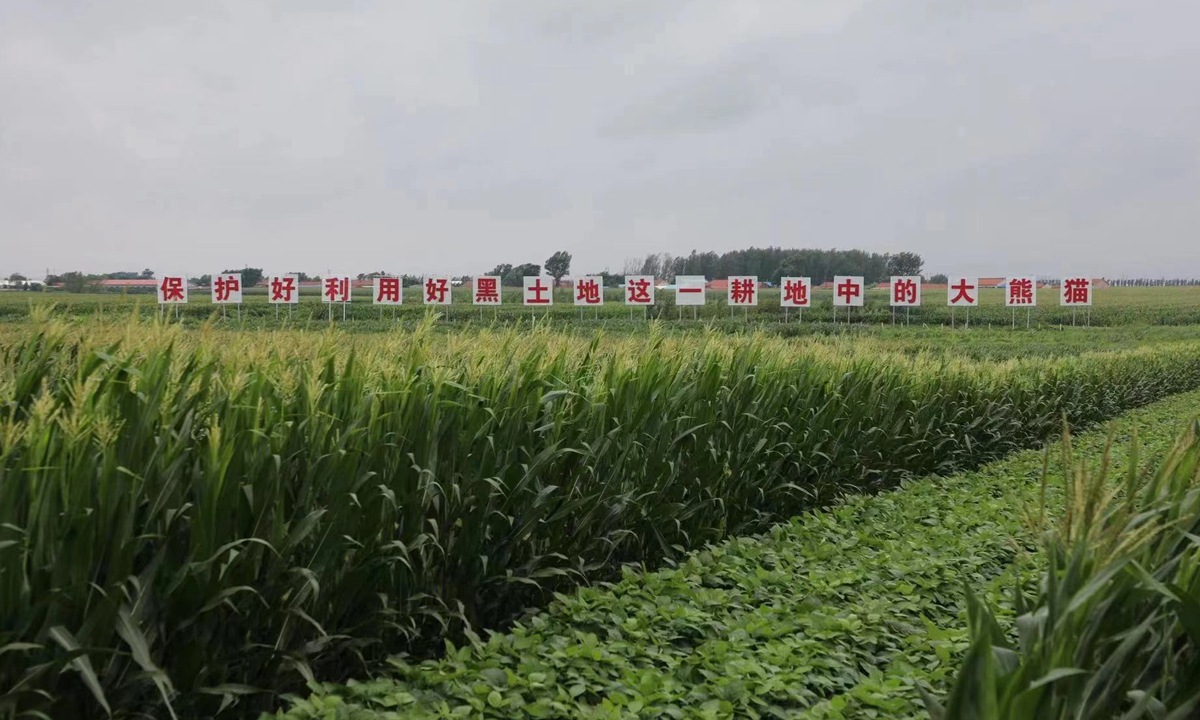
Areas of corn plantation in Lishu county, Northeast China's Jilin Province Photo: Liu Zihe
As treasured as giant pandas
At the beginning of this century, due to long-term intensive cultivation and burning of straw residues in farmland, the black soil in Northeast China has faced problems such as degeneration, soil compaction, and a decline of organic matters in soil. Consequently, the protection of black soil has become a pressing concern.
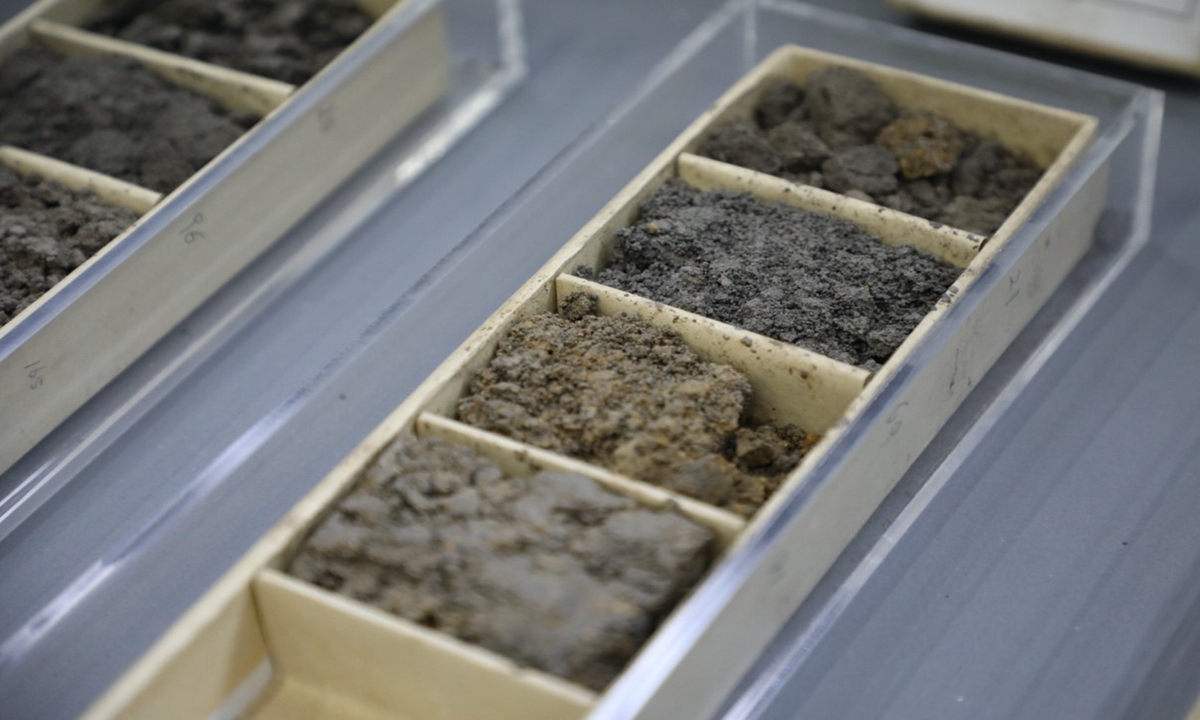
Black soil specimens exhibited at the Chinese Black Soil Museum in Lishu county, Northeast China's Jilin Province Photo: Liu Zihe
Since 2008, the country of Lishu has been employing a no-tillage technique with full-scale corn stover cover for mulching to scientifically utilize and protect black soil. This approach has yielded remarkable results.
Currently, Lishu has a cultivated area of 3.938 million mu (about 262,500 hectares), and its annual grain output has stabilized at 2 million tons, making it an important grain production area not only in Jilin Province but also in China.
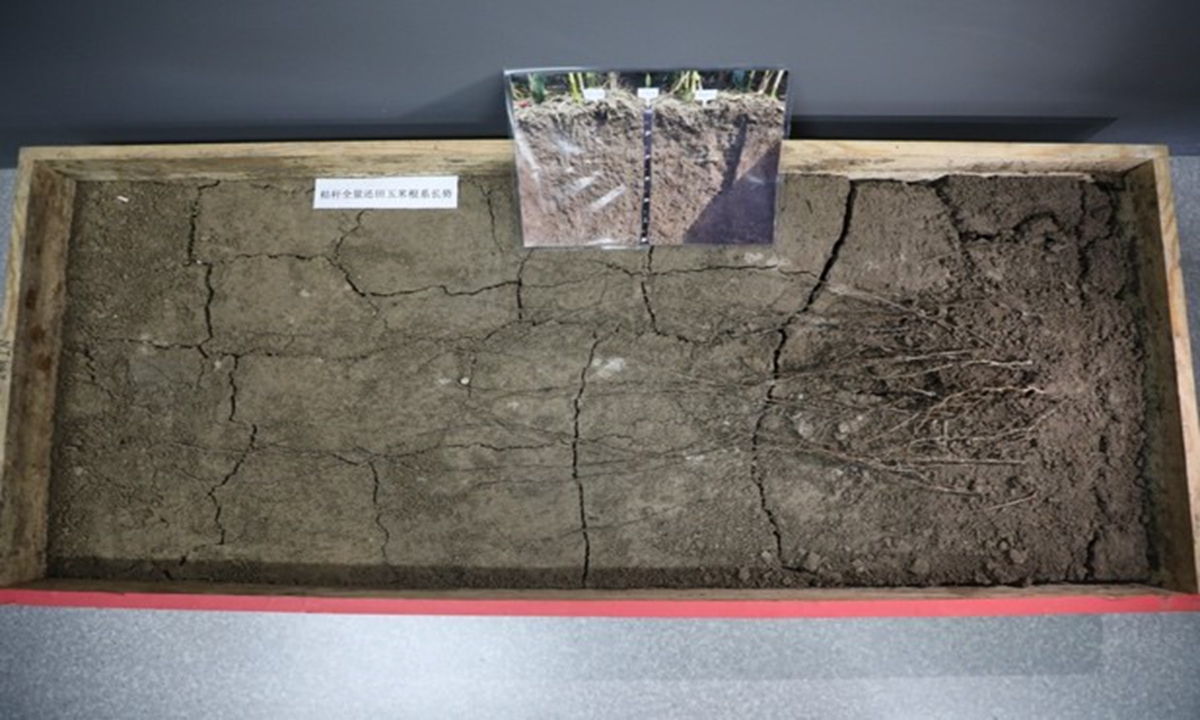
Corn root length with full straw returning (above) increases by about 20 percent compared with that of traditional cultivation method. Photo: Liu Zihe
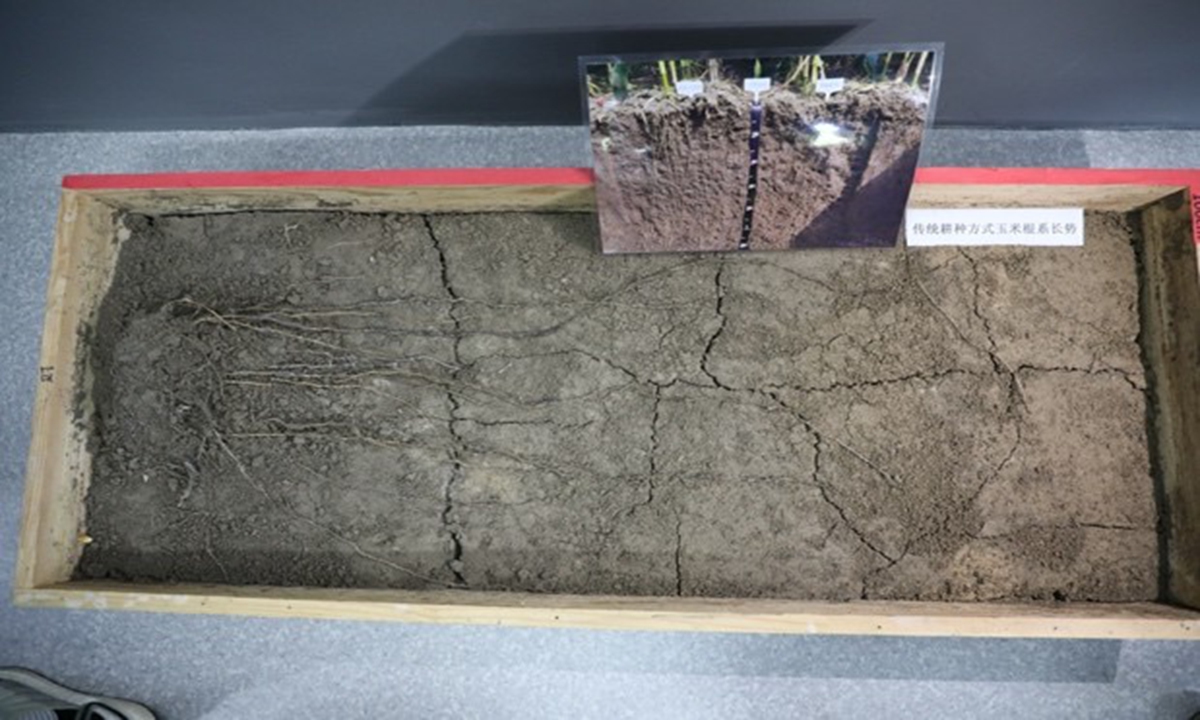
Corn root length with full straw returning (above) increases by about 20 percent compared with that of traditional cultivation method. Photo: Liu Zihe
Lishu model
"We must protect the black soil akin to safeguarding the giant panda," "we must thoroughly summarize the Lishu Model and promote it on a larger scale," and "we must develop specialized farmers' cooperatives based on local conditions." These are three important instructions that Xi made during his visit to the county.
The Lishu Model refers to a set of mechanized protective techniques developed by agricultural scientists to achieve utilization and protection of black soil. After the autumn harvest, corn straw is used as mulch to maintain soil moisture and nutrients. At the same time, with major breakthroughs in the development of key tools for protective cultivation, farmers can use no-tillage seeders and carry out multiple cultivation operations in one go.
The Lishu Model offers four no-tillage sewing forms tailored to different topographic and terrain conditions, addressing specific issues and producing numerous positive effects, including stable and high crop yields, reduced soil erosion, decreased soil moisture evaporation and improved soil fertility.
The model is still in a dynamic developing process, forming a comprehensive R&D model involving research institutions and universities, technical promotion departments, agricultural machinery manufacturing companies, and agricultural service organizations. Researchers and graduate students from universities are stationed at experimental research bases, continuously exploring new solutions which will make the Lishu Model adaptable to more regions, and developing more efficient supporting agricultural machinery.
Additionally, local training and technical promotion centers have been established to enhance local farmers' understanding and acceptance of the Lishu Model, promoting its implementation on a larger scale.
Currently, the Lishu Model has been widely promoted in the black soil areas of Northeast China and adopted by numerous farmers.
Yang Jingtong, a local farmer participating in collective large-scale planting in Lishu, told the Global Times that "since adopting the Lishu Model, the land has become more fertile, the soil structure has become looser, and the grain yield has increased."
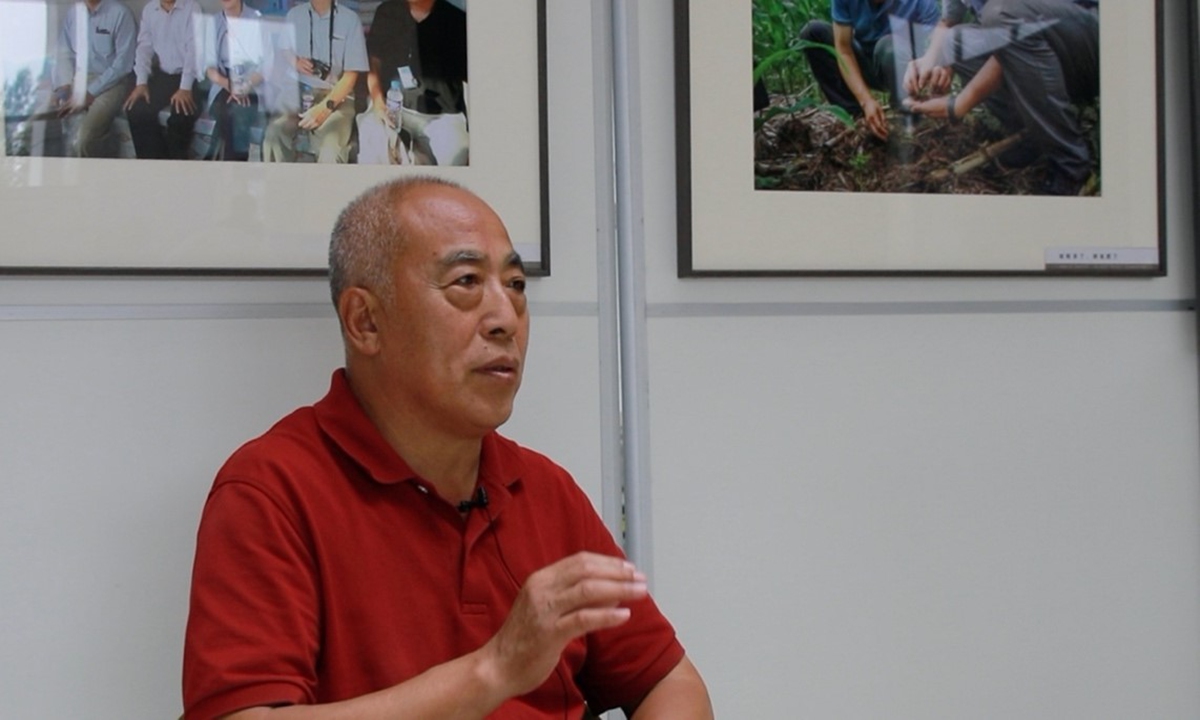
Wang Guiman, director of Agricultural Technology Promotion Station in Lishu county Photo: Yang Yuqian
Wang Guiman, who is the director of Agricultural Technology Promotion Station in Lishu county, summarized the Lishu Model as a protective tillage method known as "maize straw-cover centered," which has brought about a revolution in cultivation systems. In just three years, the cultivated areas have grown from 1.5 million mu (about 100,000 hectares) to 3 million mu.
Regarding how to transform the Lishu Model from simple promotion to comprehensive implementation, Wang shared the planning and expected goals, stating that "the Lishu Model should be rooted in the Northeast, promoted throughout the country, and extended to the world."
This means that the Lishu Model should explore different technical systems for different regions and also should be expanded beyond the black soil regions.
"The Lishu Model has been implemented in some countries along the route of China-proposed Belt and Road Initiative," Wang said. "In the future, it will continue to serve as a crucial cornerstone for black soil conservation and utilization and sustainable agricultural development."
Zhou Gege, Liu Zihe, Chen Zhongrui, Xia Tingyu, Duan Yufei, Wu Yixuan and Yang Yiwen from Communication University of China contributed to the story.

